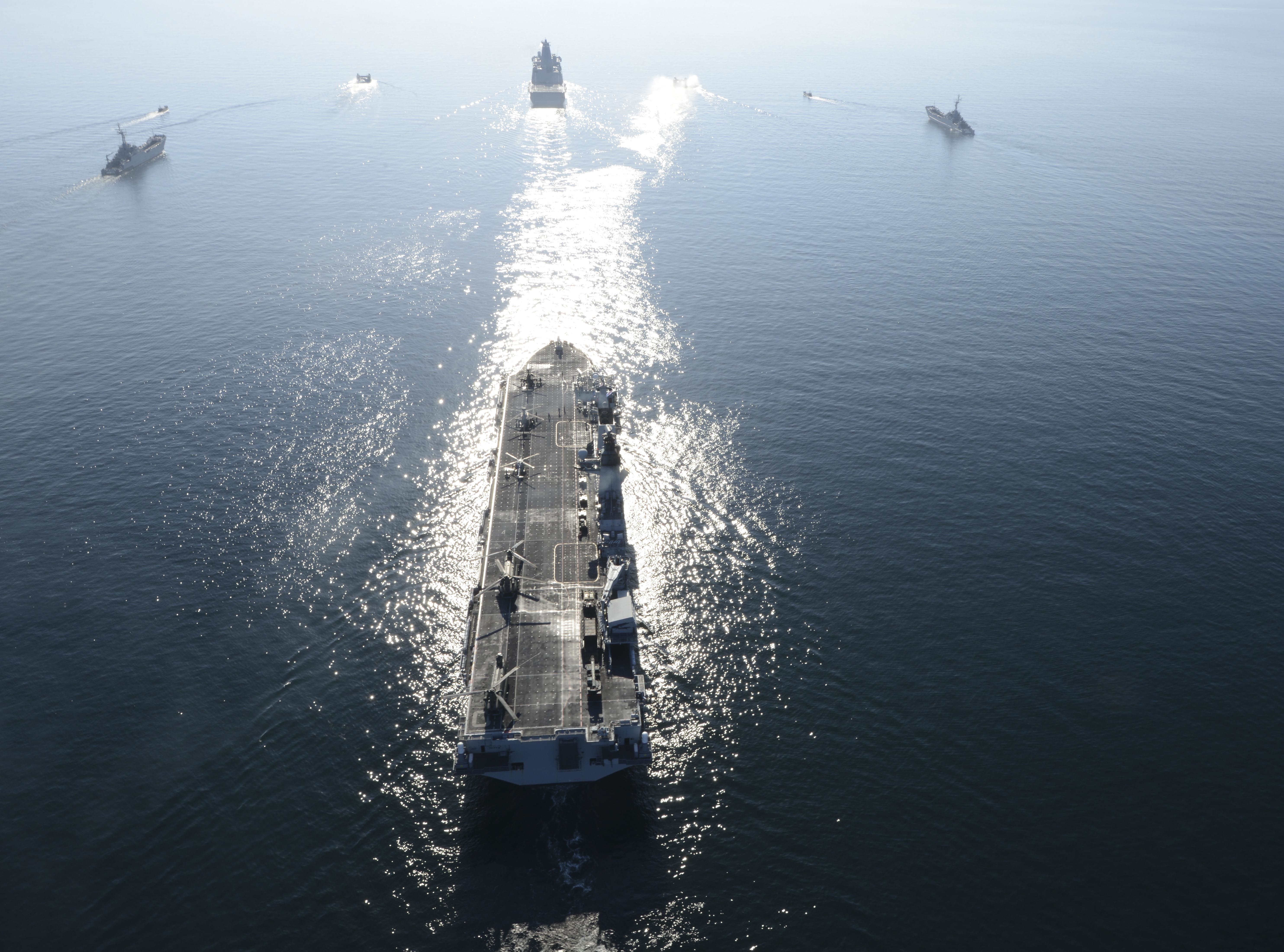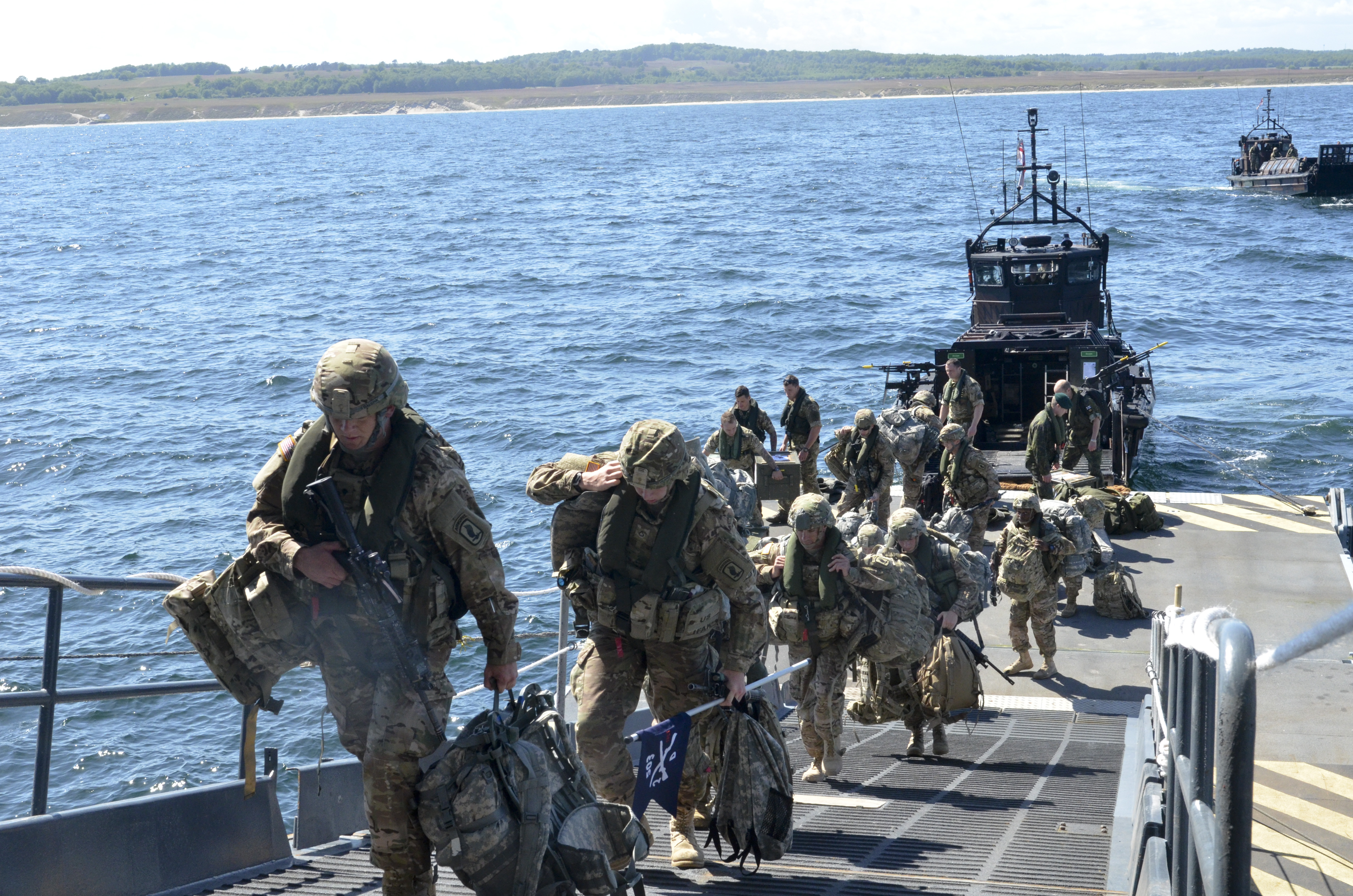
NATO may be best known for its protracted counterinsurgency campaign in Afghanistan, or for its current efforts to shore up defenses in Eastern Europe with air and ground exercises. But moving forward NATO must also consider its role in the global maritime domain, as it is central to the twin security challenges of an increasingly aggressive Russia and a crumbling Middle East order that the Alliance faces right now.
Looking beyond the current challenges in and around Europe, NATO must also start preparing for a 21st century that promises to not only be globalized, but maritime in nature.
At the recent Sea Sense 2015 conference in London, hosted by NATO’s Allied Maritime Command, senior Alliance leaders warned that allied navies would be increasingly challenged by a newly aggressive and assertive Russia at sea.
They could not be more right.
Russia has tested NATO, its members, and partners below, on, and above the surface in both the Baltic Sea and the Black Sea with stunning regularity. A few examples of this should suffice: Earlier this summer U.S. Naval Forces Europe released a video of a Russian jet closely buzzing the guided missile destroyer USS Ross (DDG-71) while operating in the Black Sea.
The Swedes, Finns and British have searched for suspected Russian submarines close to their coasts. Russian warships also have sought to interrupt the laying of subsurface cables between Lithuania and Sweden.
All of this activity has become part of a new normal in the maritime spaces around Europe, and it is very much part of Russia’s new aggressive posture against NATO and the U.S. presence in Europe.
Put differently, the Baltic Sea and the Black Sea have become central friction zones between NATO and the United States on the one hand, and Putin and Moscow on the other. And much suggests that friction and contest at sea may spread further.
Russia recently signed a port-access agreement with Cyprus (thereby bolstering Russia’s access to the Mediterranean), and Russia’s northern fleet, with which a significant portion of the Russian nuclear deterrent resides, is increasingly active in the high North.
That Russia is expressing its aggressiveness and shows force at sea has a certain logic. The maritime environment has a dynamism and fluidity to it that is just not there on dry land. Crossing a NATO member’s land border with ground power is an obvious red line and could quickly spiral out of control and lead to NATO launching a collective response. That is something that even Putin is not prepared to face at the moment. At sea (and in the air), however, Russia can continue to push and prod to test NATO and national reactions, and perhaps even sow doubt in the minds of publics and policymakers about the credibility of NATO’s defense commitments.
Another maritime challenge looms large to NATO’s south. The ongoing civil war in Syria, and the turbulence around the Mediterranean’s southern rim have spawned an enormous flow of refugees across the Mediterranean. And while the response is not primarily a NATO mission, European warships and even submarines are being pressed into service to monitor the sea, intercept refugees, and suppress the smugglers.

Furthermore, the instability in North Africa and the Middle East may yet generate the need for military intervention at some stage, which would rely heavily on maritime forces for access, fires, supporting operations ashore, and command and control. Indeed, NATO’s air campaign over Libya in 2011 utilized more than 50 warships from NATO nations, ranging from aircraft carriers and frigates to submarines and logistics ships.
But NATO must also consider the global maritime domain beyond the current pressing challenges in Europe’s neighborhood. The maritime domain remains absolutely vital to the economies of NATO members, as over 90 percent of the world’s trade is carried across the oceans in ships. It is also a domain that is increasingly congested and contested by emerging powers, such as China, which have found the global maritime domain to be the primary space in which to express greater international ambitions, and to use its maritime power to guard its increasingly far flung interests and investments. Indeed, earlier this summer China and Russia ran a joint naval exercise in the Mediterranean, at the doorstep of the Alliance. Before the start of the exercise Chinese frigates also entered the Black Sea. NATO is of course not a global alliance, but the transatlantic community must contend with a globalized world.
In order to effectively respond to these maritime challenges NATO must begin the process of resetting its strategic mindset, which understandably became deeply ground- and counterinsurgency- centric over the course of a decade of operations in Afghanistan. NATO also released its own Alliance Maritime Strategy in 2011. It is a short and to-the-point document that effectively and clearly lays out the maritime environment and NATO’s roles and interests in that domain. It is also clearly linked to NATO’s overarching Strategic Concept.
Unfortunately, to date it largely has been drowned out by the series of crises that have struck Europe’s neighborhood, and continued defense-spending austerity. NATO must now get serious about its own maritime strategy, and review, update, and elevate it. Finally, NATO and its members should once again focus on high-end warfighting in the maritime domain. NATO navies have been far from idle over the last 20 years, but much of the maritime efforts has been focused on the lower end of the conflict spectrum, such as counter-piracy, counterterrorism at sea, humanitarian shipping escort, and capacity building. With an aggressive Russia increasingly active in European seas, and a competitive and contested global maritime domain, surface, sub-surface, anti-submarine, and mine warfare are once again extremely relevant for defense and deterrence in Europe.
NATO is at heart a maritime alliance. The name of the alliance itself makes this clear. It is time for NATO to reclaim that spirit and heritage.
(This article is based on the just released Atlantic Council report “The Naval Alliance: Preparing NATO for a Maritime Century,” by Magnus Nordenman.)




